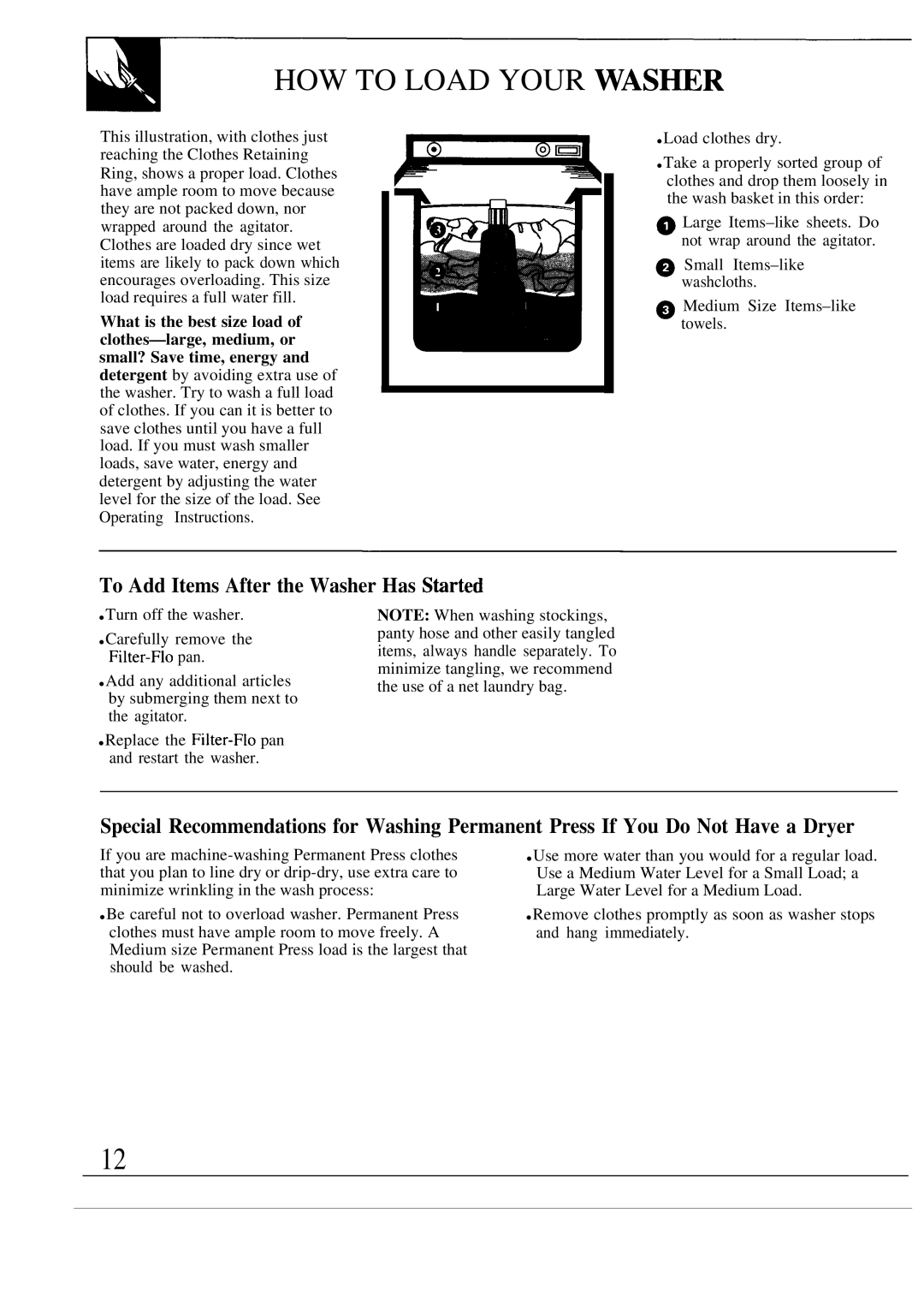
HOW TO LOAD YOUR WAS~R
This illustration, with clothes just reaching the Clothes Retaining Ring, shows a proper load. Clothes have ample room to move because they are not packed down, nor wrapped around the agitator. Clothes are loaded dry since wet items are likely to pack down which encourages overloading. This size load requires a full water fill.
What is the best size load of
—
●Load clothes dry.
●Take a properly sorted group of clothes and drop them loosely in the wash basket in this order:
~Large
~Small
~Medium Size
To Add Items After the Washer Has Stirted
●Turn off the washer.
●Carefully remove the
●Add any additional articles by submerging them next to the agitator.
●Replace the
NOTE: When washing stockings, panty hose and other easily tangled items, always handle separately. To minimize tangling, we recommend the use of a net laundry bag.
Special Recommendations for Washing Permanent Press If You Do Not Have a Dryer
If you are
●Be careful not to overload washer. Permanent Press clothes must have ample room to move freely. A Medium size Permanent Press load is the largest that should be washed.
●Use more water than you would for a regular load. Use a Medium Water Level for a Small Load; a Large Water Level for a Medium Load.
●Remove clothes promptly as soon as washer stops and hang immediately.
12
